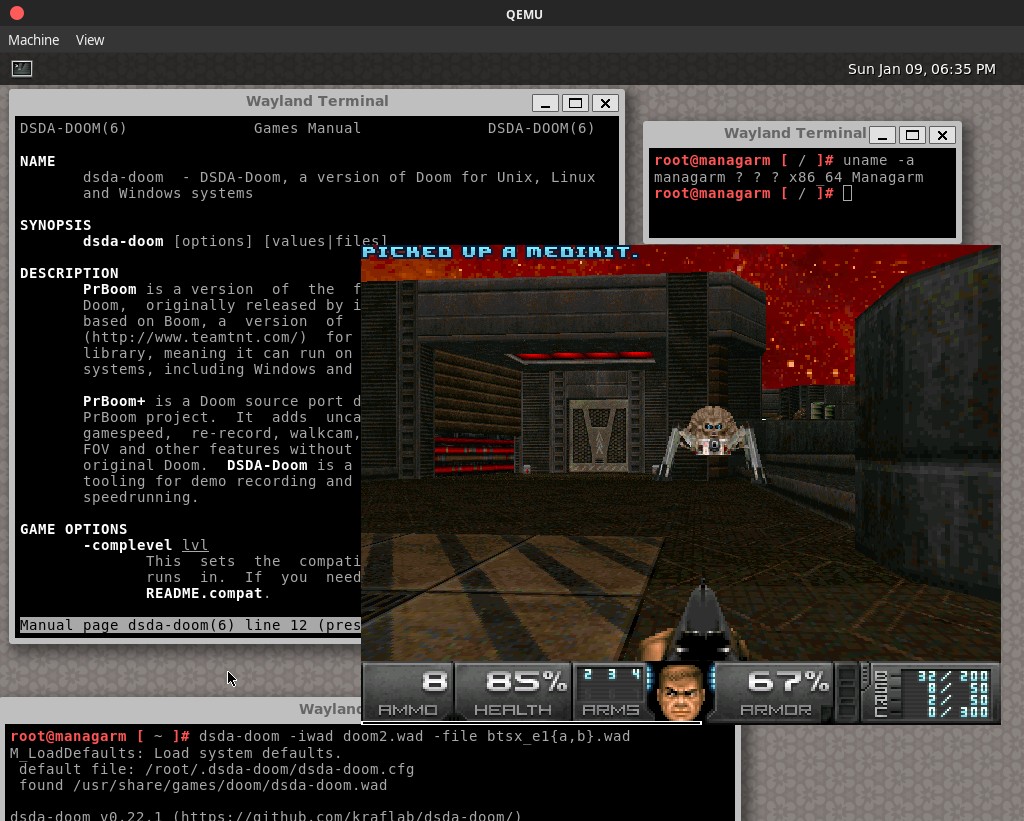
The Linux world and its surroundings are going through turbulent times.
Developers are debating how to integrate Rust into the kernel while key contributors are leaving. Against the backdrop of these conflicts, talk of possible forks is starting again, but the reality is much more complex: a whole group of alternative operating systems is maturing alongside Linux, each following its own path and demonstrating different approaches to kernel architecture, security, and compatibility.
Rust’s history has been painful for the kernel community. The ability to use the language in low-level components has opened up new perspectives, but has also sparked heated debates. The maintainer of the Rust kernel, Wedson Almeida Filho, has left his post. Following him, Asahi Linux maintainer Hector Martin, who was involved in porting the kernel to Apple Silicon processors, has left the project.
Key figures who worked on the graphics stack for these processors have also left the project: the GPU driver developer known as Asahi Lina, and then another participant in this area, Alyssa Rosenzweig. The latter has already moved to Intel, where many hope her experience will help accelerate the development of open drivers for the company’s modern graphics cards. Similarly, a decade-long attempt to integrate the bcachefs file system ended with its migration to external media, not being accepted into the kernel.
With so many staff losses and technical disagreements, the question arises: Where will people go when they tire of the infighting within Linux?
The answer is projects that develop new kernels and systems from scratch. And while many seem like academic experiments, their maturity and feature set are becoming increasingly serious.
Managarm has been around for about six years, even though its description sounds almost science fiction. It’s a microkernel-based operating system, in which asynchrony permeates every layer, and on which a huge number of applications written for Linux run. Several architectures are supported: x86-64, Arm64, and RISC-V is under active development. Multiprocessors, ACPI, AHCI, and NVMe disks, IPv4 networking, Intel and QEMU virtualization are supported, both Wayland and X11 work, as well as hundreds of utilities from the GNU set and even games like Doom.

The system is written in C++ and is fully available on GitHub, with extensive documentation in the form of the Managarm Handbook. Despite the project’s research nature, its feature set and ability to run familiar programs make it a standout among microkernel developments.
Asterinas represents a different direction. It is also a system capable of running programs written for Linux, but its kernel is completely different. The project is written in Rust and is based on the framekernel concept described in the academic paper Framekernel: A Safe and Efficient Kernel Architecture via Rust-based Intra-kernel Privilege Separation. Unlike a traditional microkernel, which divides components based on processor privilege levels, the framekernel uses the features of the Rust language itself.
As a result, only a minimal part of the kernel can run insecure code, and all other services must be written in a secure subset of the language. This architecture echoes previous attempts, such as RedLeaf OS, the SPIN project on Modula-3, or HOUSE on Haskell, but Rust offers many more practical possibilities. Asterinas already has impressive documentation, and its development is widely followed, as the language itself has become one of the key topics in the IT industry.
There is a third initiative that combines the features of the previous two. Xous is a microkernel system written in Rust that does not seek to be compatible with Linux. Its goal is different: to create a secure platform with proprietary applications and hardware. The project is led by renowned hardware researcher Andrew Huang, known to many as Bunnie.
His team has linked Xous to the Betrusted initiative, and the Precursor device has already been released: a pocket-sized computer with a screen and battery, designed for the secure storage of digital identifiers. It runs the Vault application, which combines U2F/FIDO2, TOTP, and traditional password management into a single interface. Precursor can be used like Yubikey, connecting to a PC for authentication, but with one important difference: the user sees on the display which service they are unlocking. Additionally, the project features a Plausibly Deniable DataBase (PDDB), a database that reflects the developers’ deep concern for privacy issues. This is supported by documentation: Xous Book and Betrusted wiki, which describe the details of the architecture and implementation.
These systems are still niche, but they demonstrate the breadth of ideas emerging outside the traditional Linux community. While many experienced developers never return to the kernel, their knowledge and approaches are passed down in projects like Managarm, Asterinas, and Xous.
They are able not only to offer their own solutions, but also to Rework the vast body of tools that have accumulated around Linux, maintaining continuity and opening up new development opportunities.
Follow us on Google News to receive daily updates on cybersecurity. Contact us if you would like to report news, insights or content for publication.
